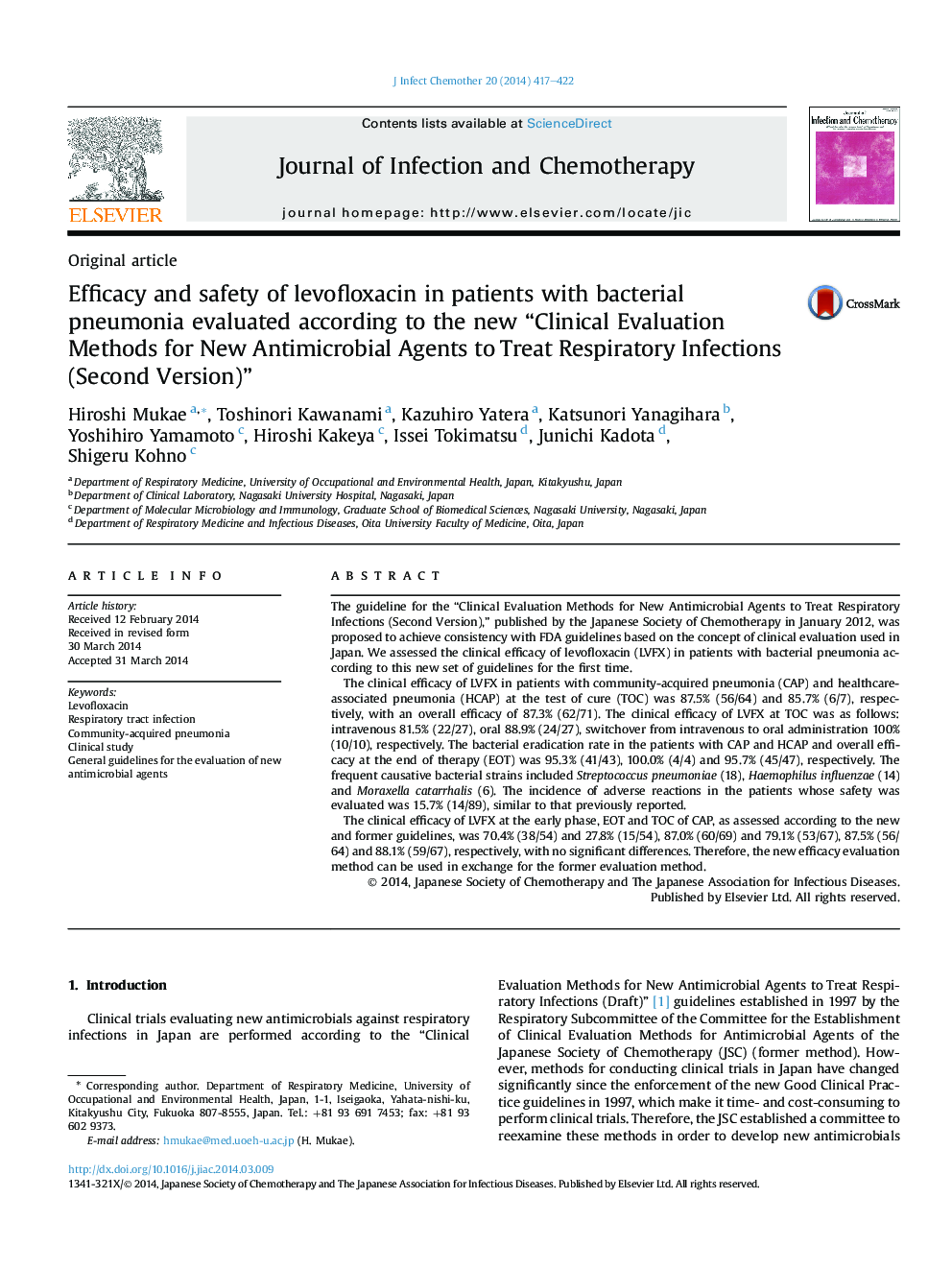| Article ID | Journal | Published Year | Pages | File Type |
|---|---|---|---|---|
| 3376942 | Journal of Infection and Chemotherapy | 2014 | 6 Pages |
The guideline for the “Clinical Evaluation Methods for New Antimicrobial Agents to Treat Respiratory Infections (Second Version),” published by the Japanese Society of Chemotherapy in January 2012, was proposed to achieve consistency with FDA guidelines based on the concept of clinical evaluation used in Japan. We assessed the clinical efficacy of levofloxacin (LVFX) in patients with bacterial pneumonia according to this new set of guidelines for the first time.The clinical efficacy of LVFX in patients with community-acquired pneumonia (CAP) and healthcare-associated pneumonia (HCAP) at the test of cure (TOC) was 87.5% (56/64) and 85.7% (6/7), respectively, with an overall efficacy of 87.3% (62/71). The clinical efficacy of LVFX at TOC was as follows: intravenous 81.5% (22/27), oral 88.9% (24/27), switchover from intravenous to oral administration 100% (10/10), respectively. The bacterial eradication rate in the patients with CAP and HCAP and overall efficacy at the end of therapy (EOT) was 95.3% (41/43), 100.0% (4/4) and 95.7% (45/47), respectively. The frequent causative bacterial strains included Streptococcus pneumoniae (18), Haemophilus influenzae (14) and Moraxella catarrhalis (6). The incidence of adverse reactions in the patients whose safety was evaluated was 15.7% (14/89), similar to that previously reported.The clinical efficacy of LVFX at the early phase, EOT and TOC of CAP, as assessed according to the new and former guidelines, was 70.4% (38/54) and 27.8% (15/54), 87.0% (60/69) and 79.1% (53/67), 87.5% (56/64) and 88.1% (59/67), respectively, with no significant differences. Therefore, the new efficacy evaluation method can be used in exchange for the former evaluation method.
